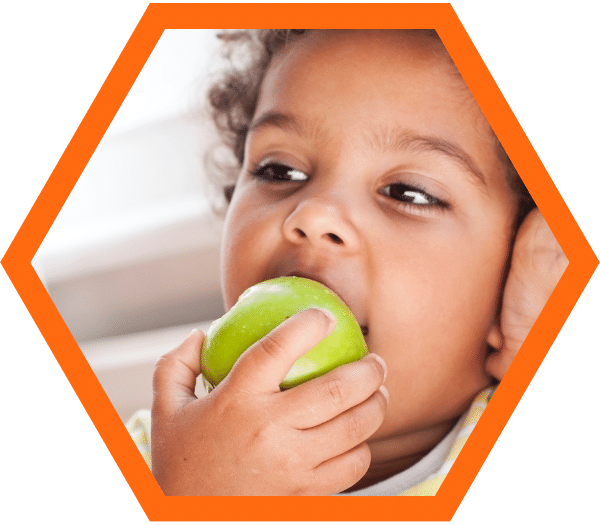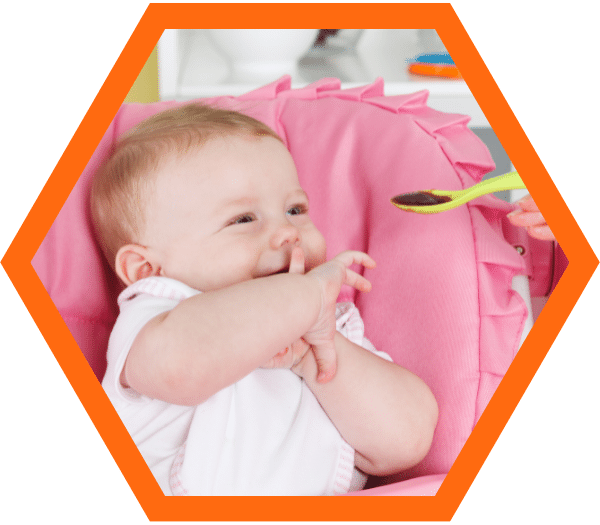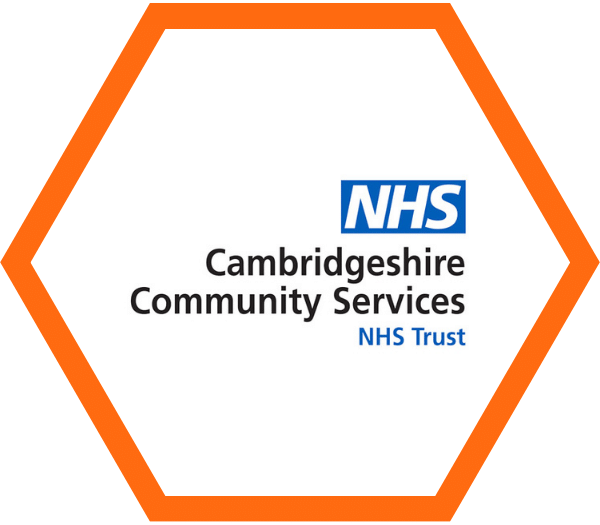Eating, drinking and swallowing
Swallowing is an activity that most of us do not even think about, it just happens.

Learn more
Introduction
But swallowing is a complex process that involves a large number of nerves and muscles that all have to work together to stop any food or liquid entering the windpipe (trachea) and ‘going down the wrong way’.
We all momentarily ‘close’ our airway and stop breathing as we swallow. To do this we must have good control over our breathing.
When our breathing is disrupted for any reason, it can be more difficult to coordinate the swallow with breathing and food or drink may enter the windpipe as we swallow. This is known as aspiration.
Difficulty swallowing is known as dysphagia.
Development
Children develop at different rates and there may be a reason why your child is not progressing through the typical development.
Age 0 to 6 months
Liquid
- Breast or bottle milk.
- Baby sucks from a bottle using forward and backward tongue movements and up and down jaw movements.
- Sucking is easy and rhythmical.
Solid
- None.
Age around 6 months
Liquid
- A cup may be introduced with adult support along with the breast or bottle.
Solid
- Pureed foods are introduced.
- Baby might ‘spit out’ the food initially as their tongue will still move forward and backward but they gradually learn to suck the food from the spoon.
Age 6 to 9 months
Liquid
- Baby continues to develop stability with cup drinking. It is normal to lose some liquid while they are learning what to do with their tongue and jaw.
Solid
- Mashed textures and finger foods are gradually introduced under supervision.
- Baby is able to bite food at the sides of their mouth and will still suck once the food gets onto their tongue.
Age 12 months
Liquid
- Baby continues to develop stability with cup drinking. It is normal to lose some liquid while they are learning what to do with their tongue and jaw.
- The tongue might protrude under the cup to provide stability.
Solid
- Managing lumpier textures now.
- Firmer foods can be chopped up and more varieties of food can be held in the hand.
- Food from a spoon should be thicker.
Age 18 months
Liquid
- Child might bite on the side of a cup to stabilise the jaw.
Solid
- Gradual introduction of new tastes and textures.
- The child can manage an increasing variety of firmer foods.
Age 2 years
Liquid
- Should be able to stabilise the cup.
Solid
- Should be coping with a range of tastes and textures.
- Can chew with lips closed.
If you are concerned about the development of your child’s eating and drinking skills, please speak to your health visitor or your GP. They may be able to offer you advice and support.

Tips and ideas
You may also find it useful to try the following tips and ideas:
Always ensure your child is in an upright position for safe eating and drinking.
Have fun with food. The messier the better!
Introduce one new taste per week.
Introduce a small amount of food at a time.
Don’t make what the child is eating the focus of attention.
Make neutral comments, such as don’t show your feelings if the child tries or doesn’t try it.
Reduce the number of foods the child can choose from.
Ensure there are minimal distractions at mealtimes.
Ensure consistency between feeders, such as mum and dad do the same thing.
If your child likes to have a toy while eating, have specific toys for this time.
Dysphagia
Swallowing problems
Dysphagia is the medical term for swallowing difficulties.
Some people with dysphagia have problems swallowing certain foods or liquids, while others can’t swallow at all.
Other signs of dysphagia include:
- coughing or choking when eating or drinking
- bringing food back up, sometimes through the nose
- a sensation that food is stuck in your throat or chest
- persistent drooling of saliva
- being unable to chew food properly
- a gurgly, wet-sounding voice when eating or drinking
Over time, dysphagia can also cause symptoms such as weight loss and repeated chest infections.

This guide has been based on the guide developed by Shropshire Community Health NHS Trust.
Learn more at www.shropscommunityhealth.nhs.uk

